Last-Minute NYC Holiday Gift Guide 🎁
We’ve created a holiday gift guide with presents for the intrepid New Yorker that should arrive just in time—


When I want to take a quick breather from the relentlessness of New York City, I seek out places that allow me to both relax and explore. Something about wandering through an unfamiliar place uncovering pockets of underappreciated beauty really recharges my batteries.
In Manhattan, one of those gems is the Cloisters Museum and Gardens, the much less trafficked branch of the Metropolitan Museum of Art located at the northern tip of the island. As far as out-of-the-way locations go, this one is relatively easy to reach–simply take the A train up to the 190th Street stop. Then, stroll north through Fort Tryon Park until you reach the museum.
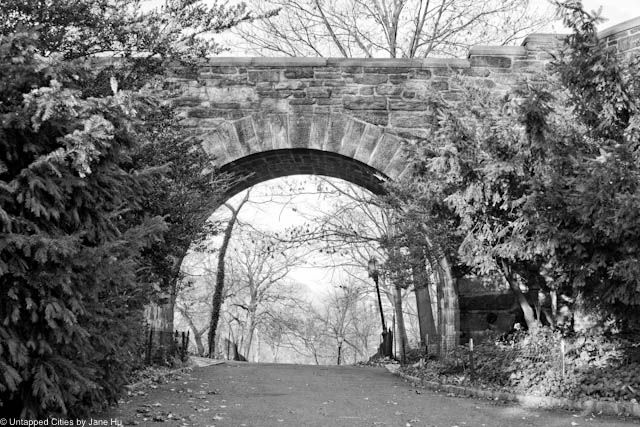 Walking through Fort Tryon Park
Walking through Fort Tryon Park
Fort Tryon Park itself is practically worth the trip, especially on a warm afternoon. In 1776, this site was lost to the British during a standoff in the Revolutionary War. The park was built and designed by the son of the architect of Central Park–Frederick Olmsted Jr.–and gifted to the city of New York by John D. Rockefeller in 1931. Rockefeller even purchased land on the New Jersey side of the river–now the Palisades State Park–in order to preserve Fort Tryon’s unspoiled views.
Green and sloped, Fort Tryon offers plenty of attractions, from terraces to playgrounds to gazebos to dog runs. However, as you head north, don’t forget to turn around and enjoy the view of the Hudson River.
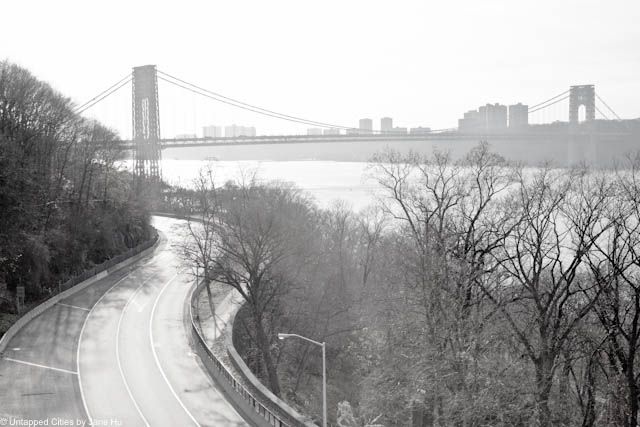 View of the Hudson from Fort Tryon Park
View of the Hudson from Fort Tryon Park
At the north end of the park is the Cloisters. The building itself was assembled from the architectural elements of five medieval French cloisters dating as far back as the twelfth century. Besides the architecture, the museum also features gardens inspired by those of medieval times. The gardens even have their own blog.
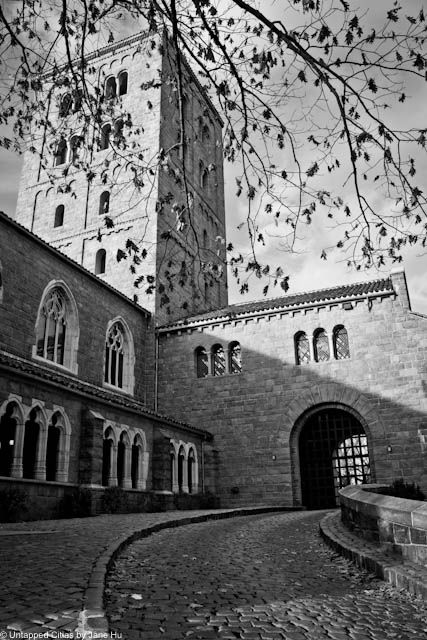 View of the Cloisters from the driveway
View of the Cloisters from the driveway
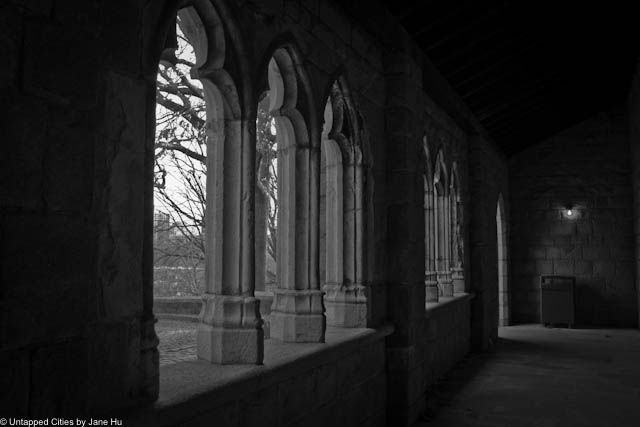
Inside the building you’ll find approximately three thousand works of medieval European art of all types, beautifully arranged in monastic rooms, lit by natural sunlight streaming in from stained glass windows.
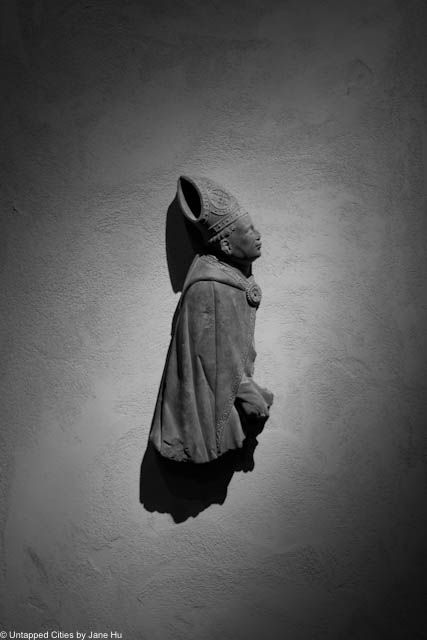 Medieval art
Medieval art
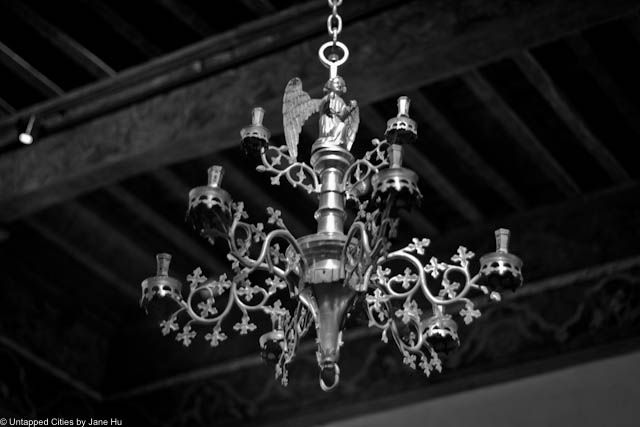 Medieval art
Medieval art
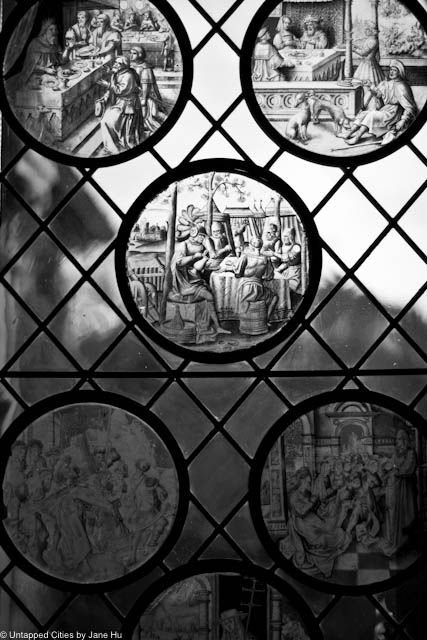 Stained glass window
Stained glass window
Allow yourself to get lost in the structure, but make sure you don’t miss the doors downstairs to the outdoor garden area. If you’re lucky, you may even catch the sunset over the Hudson.
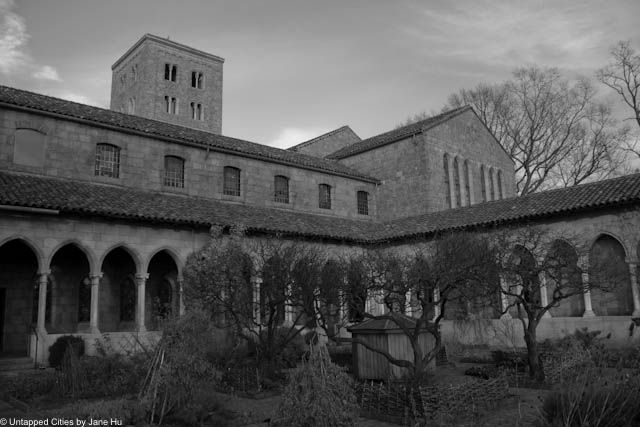 Medieval gardens in front of the Cloisters
Medieval gardens in front of the Cloisters
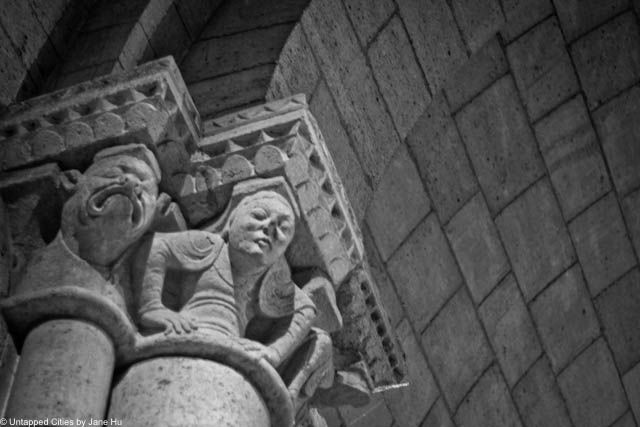 Column detail
Column detail
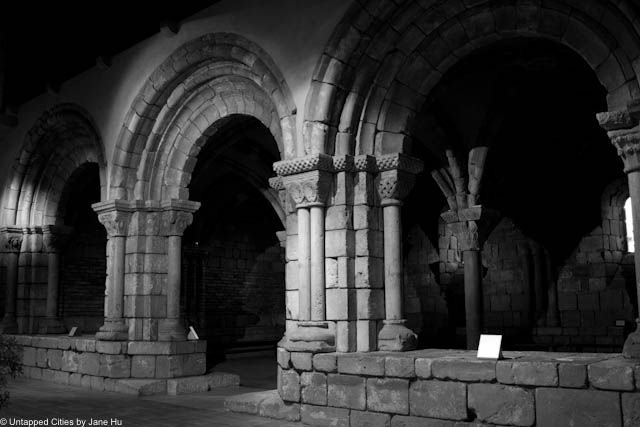
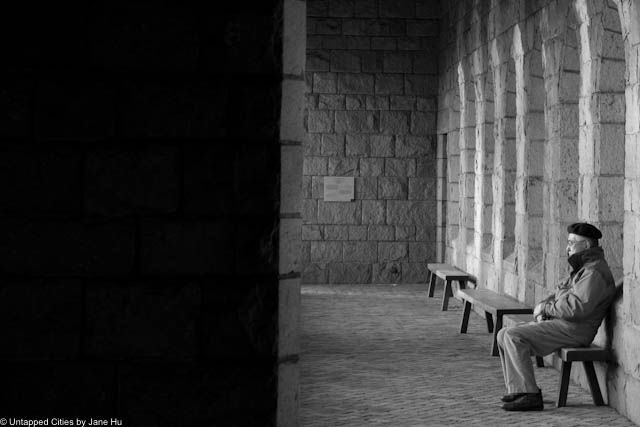
The Cloisters opened in 1938 after Rockefeller bought sculptor George Barnard’s collection of medieval art and was designated as an official NYC landmark in 1974. Thanks to Rockefeller’s foresight and generosity, we can all enjoy this landmark and collection.
The Cloisters Museum and Gardens (map)
Follow Untapped Cities on Twitter and Facebook! Get in touch with the author @plainjanehu.
Subscribe to our newsletter